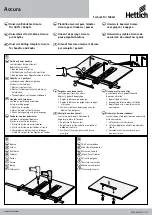
48
P1512137 R3
If the belt speed is too low, conveyor may leak around transition area.
6.8. Emergency Shutdown
In an emergency situation:
1. Stop or shut down the power source immediately and lock out all power.
2. Stop the flow of material (if applicable).
3. Ensure the machine components come to a stop before inspecting.
4. Correct the emergency situation before resuming work.
6.9. Restarting with a Full Tube
When the conveyor is shut down inadvertently or due to an emergency, the tube may still be filled with grain.
1. With the power source locked out, remove as much of the grain as possible from the tube and intake using
a shop vacuum or other tool. Do not use your hands.
Starting under load may result in damage to the conveyor.
2. If guards or covers have been opened or removed, close or replace them before restarting the unit.
Æ
3.
Electric and Gas Drive Models:
It may be necessary to tighten the drive belts slightly to handle the heavier
than normal loads.
Æ
4.
Gas and PTO Drive Models:
Since the start-up torque loads are so much higher than normal when the
conveyor belting is full, restart at low speed. Do not let the conveyor belt drive roller spin on the belt if
conveying belt does not start moving immediately. This will damage the drive roller and conveying belt.
5. Once the conveyor has been started, you may resume normal operation.
6.10. Shutdown
When operation has been completed:
1. Once the conveyor is clear of grain, lock out the power source.
2. Lower the conveyor fully.
3. Clean out any remaining grain from the conveyor with a vacuum or sweep out.
4. Clean the entire work area.
5. Remove anchors, supports, and chocks.
6.11. Clean Out
After using your conveyor, follow the clean out steps below to ensure longer belt life and trouble free
operation. Failure to clean out the conveyor can cause build up of product on the belt and roller shafts, causing
spillage, roller misalignment, and excess wear/damage to the belt.
S-DRIVE STANDARD CONVEYOR – PORTABLE GRAIN BELT CONVEYOR
















































